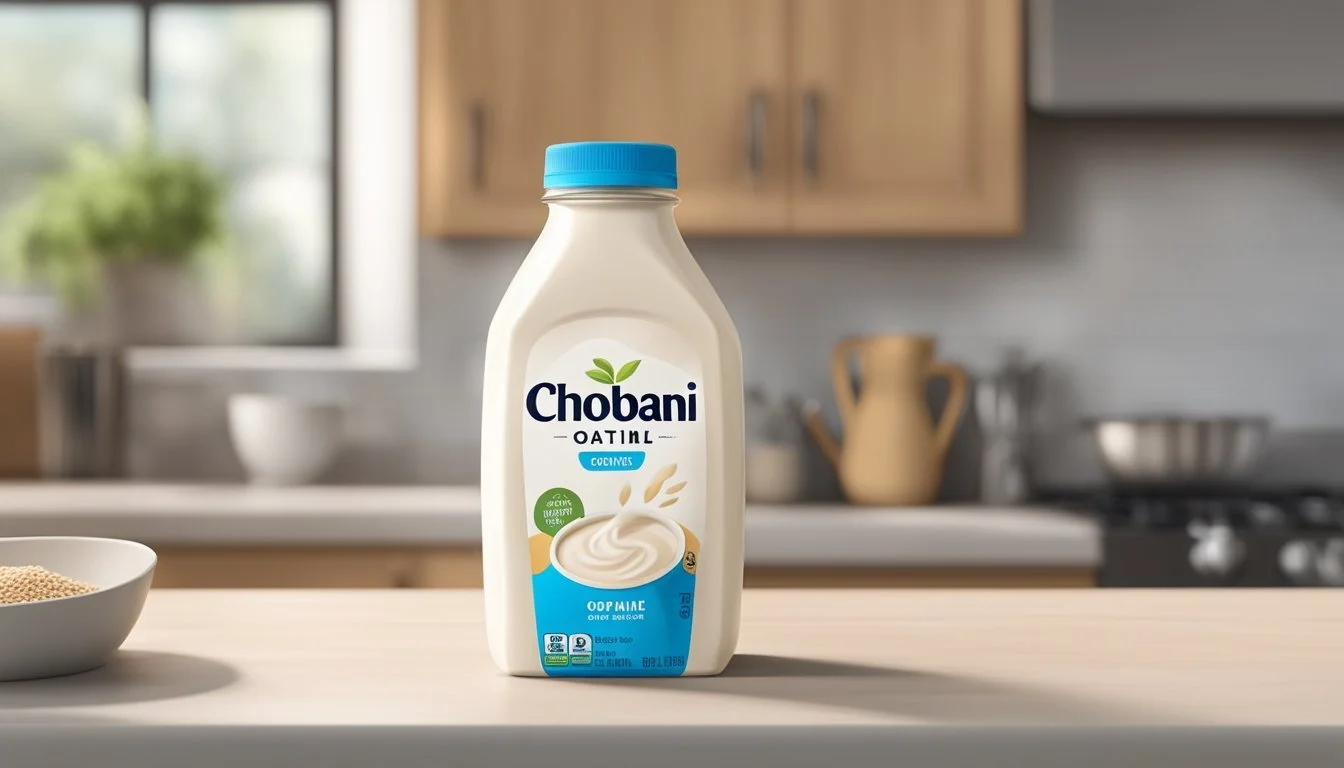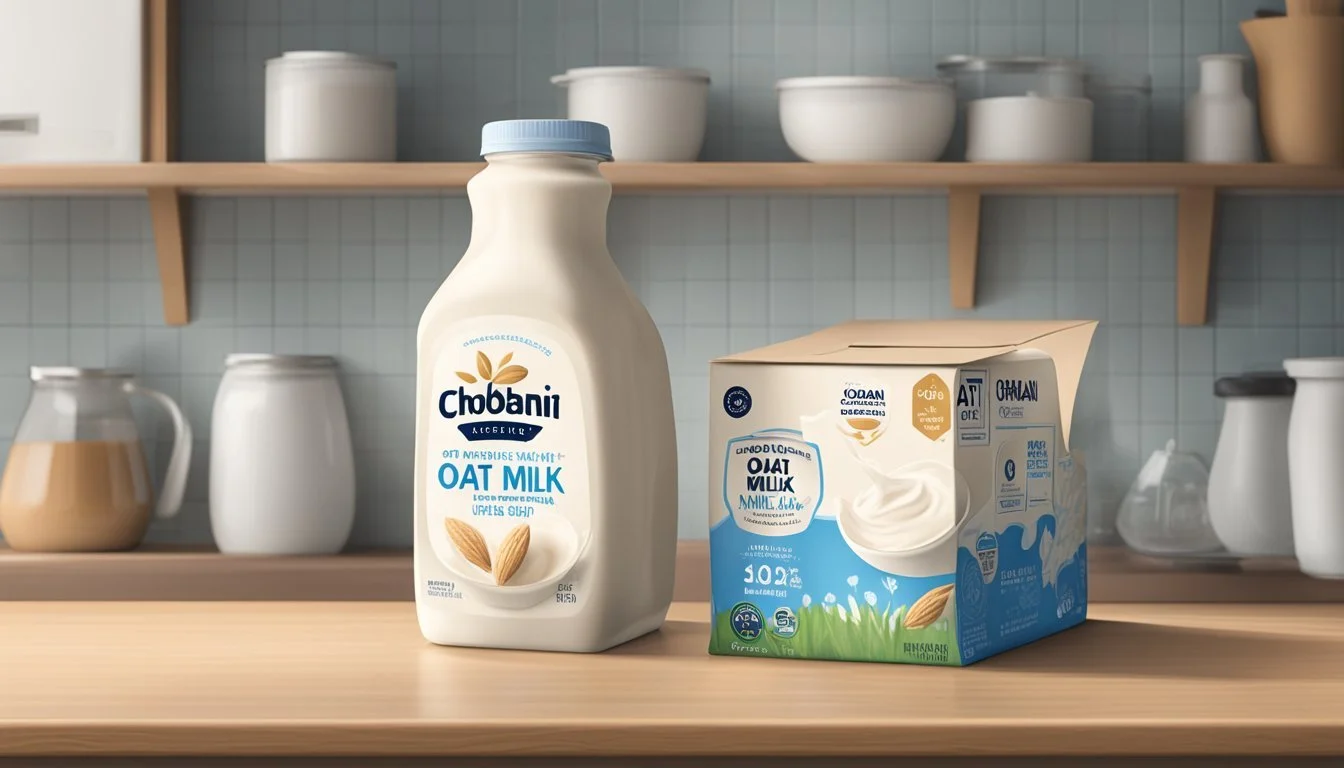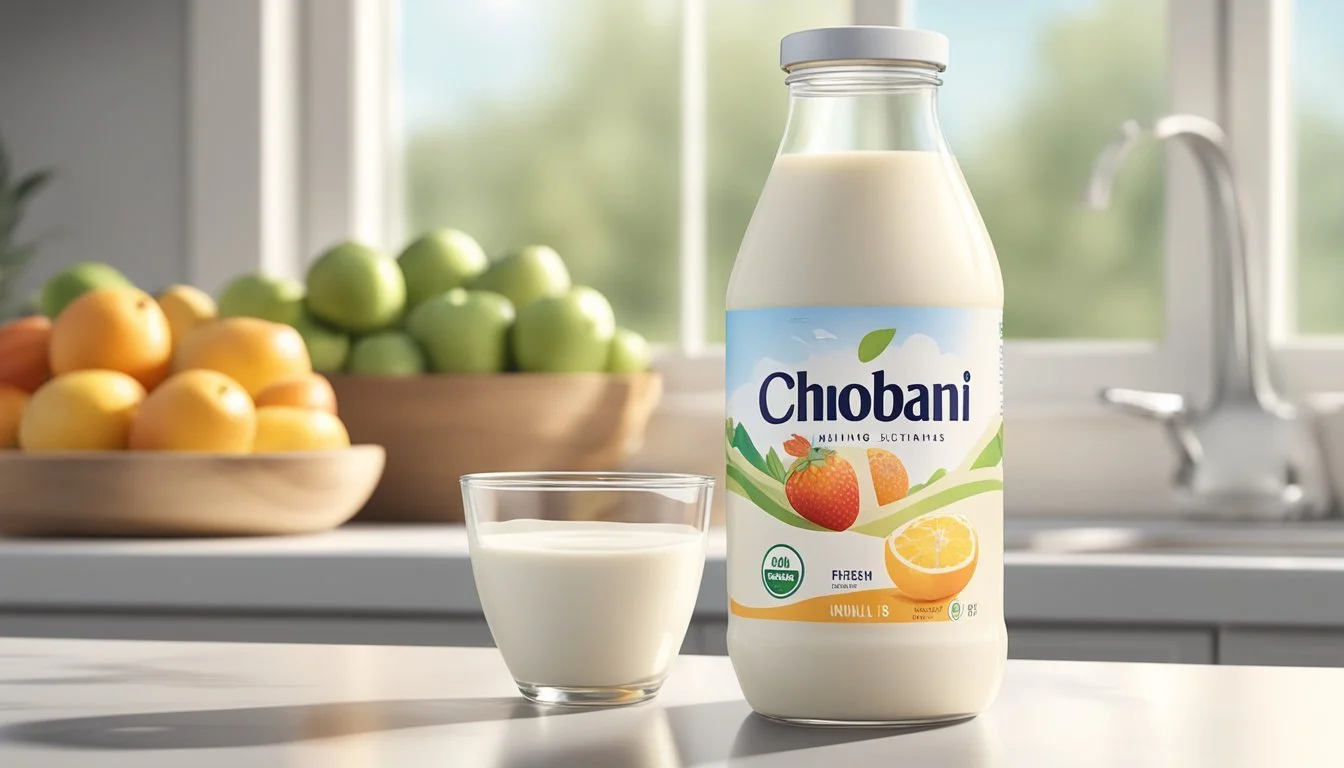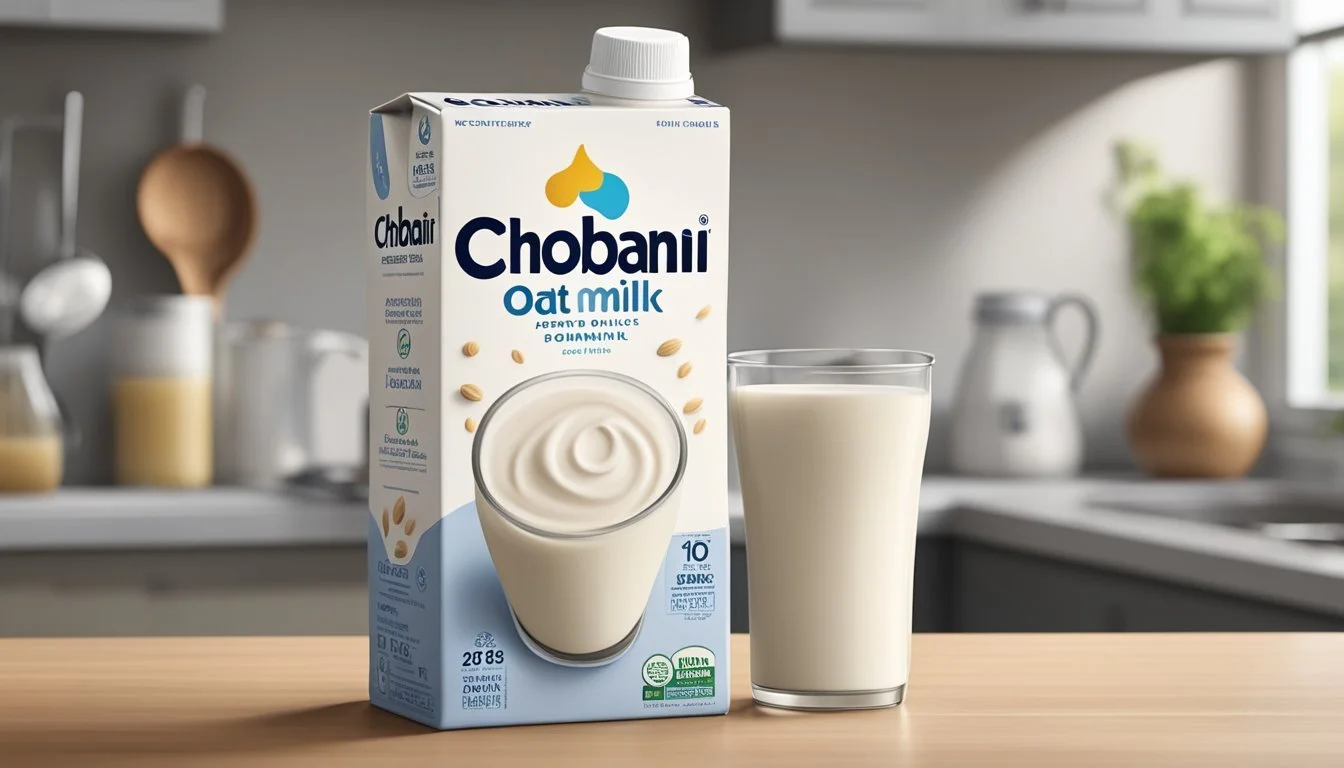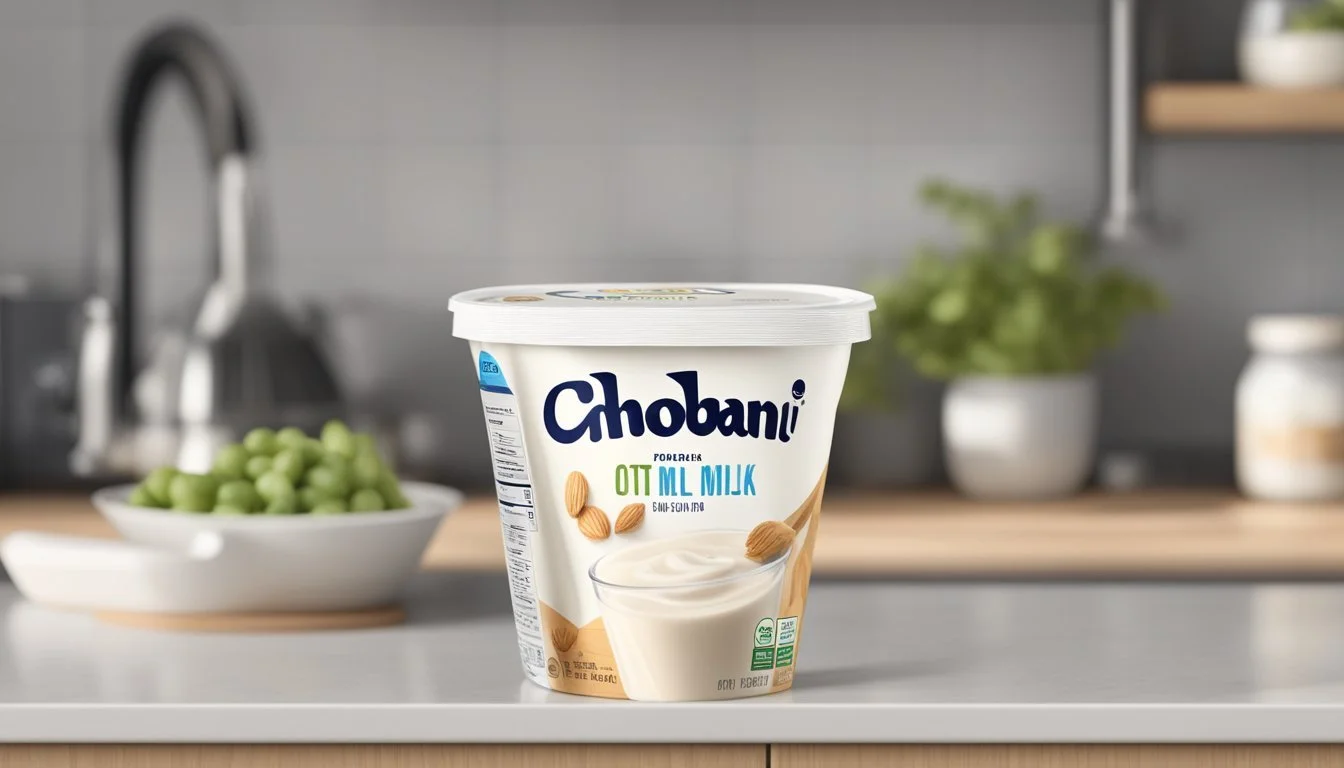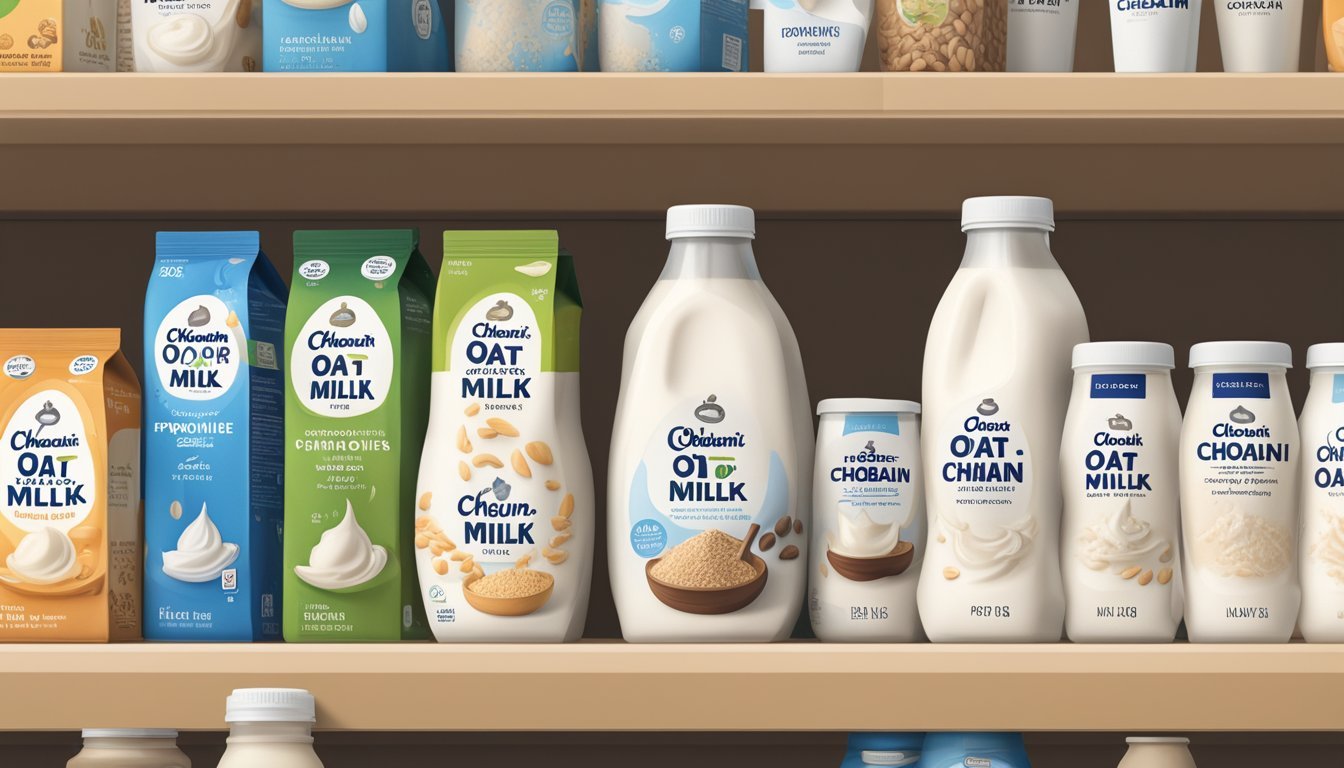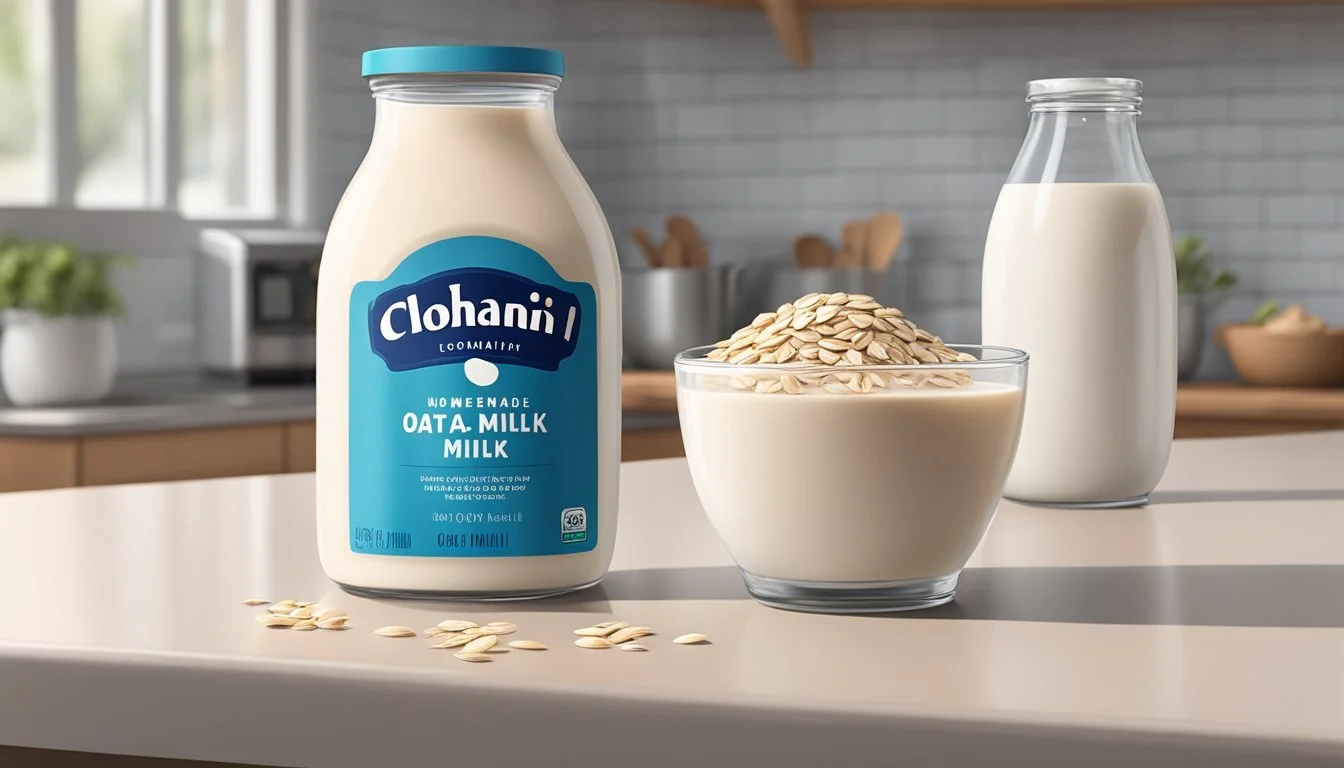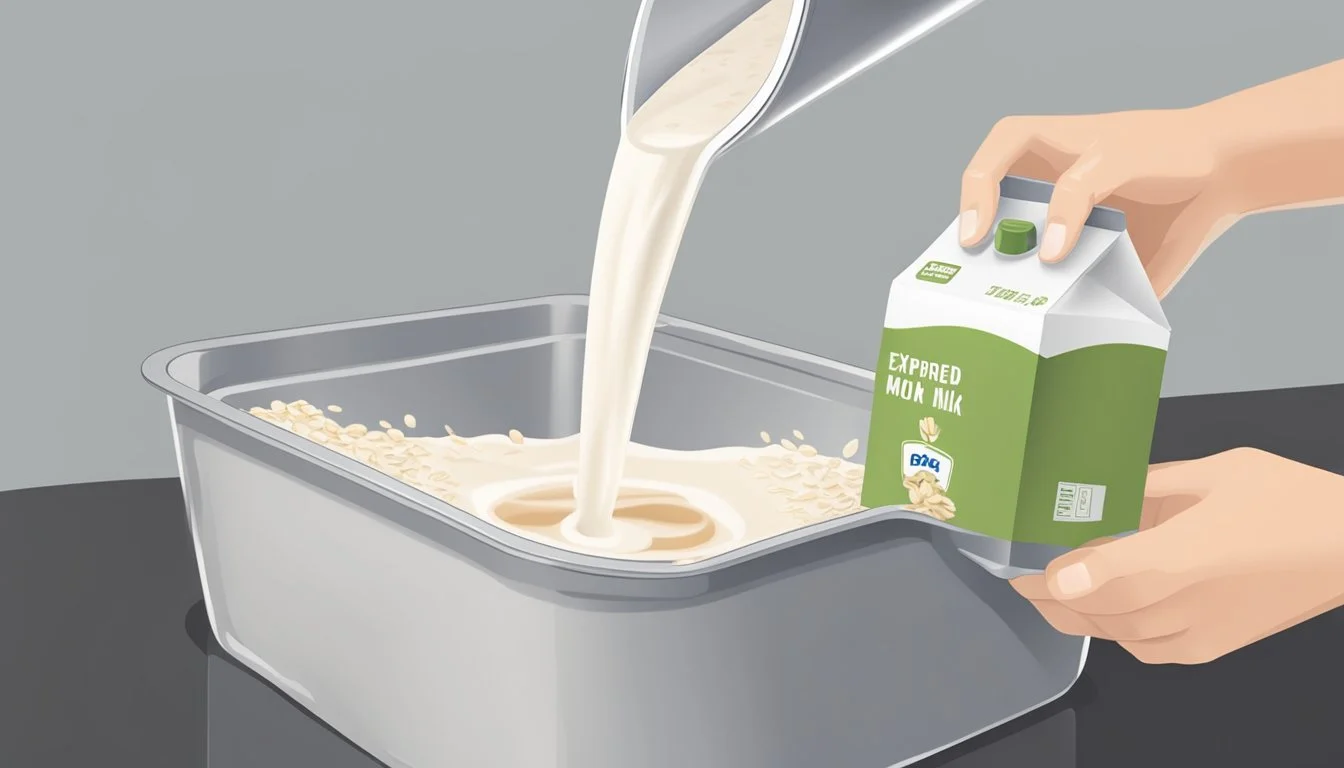How Long Does Chobani Oat Milk Last?
Shelf Life and Storage Tips
Understanding the shelf life of oat milk, particularly brands like Chobani, ensures that consumers can enjoy this dairy-free alternative at its best quality. Chobani oat milk, like most oat milk products, comes with two primary storage options: shelf-stable and refrigerated. The shelf life of Chobani oat milk varies based on these conditions as well as whether the carton is opened or unopened.
For unopened shelf-stable Chobani oat milk stored in a cool, dry place, it can last for an extended period, commonly ranging from six months to a year post the 'best by' date on the packaging. Refrigerated oat milk, on the other hand, is often best consumed close to the 'use by' date, but it may still remain fresh for a short period beyond this date if it has been stored properly.
Once opened, Chobani oat milk, regardless of being shelf-stable or refrigerated prior to opening, should be kept in the refrigerator. It is recommended to use it within 7 to 10 days for optimal freshness. Signs of spoilage include an off smell, discoloration, or a slimy texture, and at any indication of these changes, the oat milk should be discarded for food safety.
Understanding Oat Milk Shelf Life
Oat milk's shelf life varies depending on whether it's shelf-stable or refrigerated, and storage conditions play a pivotal role in its longevity.
Shelf-Stable vs Refrigerated Oat Milk
Shelf-Stable Oat Milk: Typically, unopened shelf-stable oat milk can last between 6 to 12 months, with some brands potentially remaining fresh for up to 18 months when stored in a cool, dry place away from direct sunlight. Once opened, it's advisable to consume it within 7-10 days and keep it refrigerated.
Refrigerated Oat Milk: Chobani oat milk, when stored refrigerated and unopened, maintains its freshness for 7-10 days past the printed date on the carton. However, upon opening, it should be consumed within 7-10 days to ensure quality and safety.
Impact of Storage Conditions on Longevity
Temperature: Both shelf-stable and refrigerated oat milk must be kept at a consistent, cool temperature once opened, ideally in the refrigerator at 40°F (4°C) or below.
Light and Exposure: Shelf-stable oat milk should be stored away from light, which can degrade its quality. A cupboard or pantry serves as a suitable storage space until opened.
Sealed Environment: An airtight seal is critical after opening to prevent spoilage-causing contaminants from shortening the oat milk's shelf life.
By adhering to these specific guidelines, oat milk can be enjoyed safely until the end of its shelf life, providing a delicious and non-dairy alternative for various uses.
Before Opening: Storage Tips
Proper storage of unopened oat milk ensures maximum freshness and adherence to the product's intended shelf life.
Best Places for Unopened Oat Milk
Unopened oat milk should be stored in a cool, dark place such as a pantry or kitchen cabinet away from direct sunlight and heat sources. The ideal temperature for prolonged storage is around room temperature or slightly cooler. If the oat milk is the shelf-stable variety, it does not require refrigeration until after it is opened. The packaging should remain sealed and intact to prevent contamination and ensure the milk stays fresh until its expiration date.
Understanding Expiration Dates
The expiration date on a carton of unopened oat milk indicates the last date the manufacturer guarantees the product's quality when stored under recommended conditions. This date is usually printed on the top or bottom of the container. For refrigerated oat milk, it is critical to adhere to the expiration date for quality and safety. Shelf-stable oat milk often remains safe to consume for 7-10 days past the printed expiration date unless otherwise specified by the manufacturer, but it should always be checked for spoilage indicators like odor and consistency before use.
After Opening: Preserving Freshness
Once Chobani oat milk is opened, its shelf life is limited. Proper storage is crucial to maintain its freshness and prevent spoilage. Consuming the oat milk within the recommended time frame ensures the best quality in terms of smell, taste, and texture.
How to Store Opened Oat Milk
To preserve the freshness of opened oat milk, it should be stored in the fridge immediately after use. The ideal temperature for refrigeration is between 40ºF and 75ºF. Adhering to the following guidelines helps maintain the product's quality:
Sealing the Container: After each use, ensure the oat milk container is closed tightly. This prevents the entry of air which can accelerate spoilage.
Airtight Containers: If the original packaging isn't resealable, transferring the oat milk to an airtight container can help maintain freshness.
Smell, Taste, and Texture Checks: Routinely check the oat milk for any changes in smell, taste, and texture—these are indicators of spoilage.
Observing Refrigeration Time: Opened Chobani oat milk should be consumed within 7-10 days when stored in the fridge, even if it appears unspoiled. This is a general recommendation to ensure the product remains fresh and safe to consume.
By following these storage recommendations for opened oat milk, one can minimize the risk of spoilage and enjoy the product while it is still fresh.
Identifying Spoiled Oat Milk
When oat milk spoils, it undergoes noticeable changes that can be detected through its appearance, smell, and texture. These changes are clear indicators that the oat milk should not be consumed.
Visual and Olfactory Signs
Spoiled oat milk typically exhibits visual and olfactory signs that are easy to recognize. Consumers should look for any discoloration such as a yellowish hue or the presence of mold growth, which can indicate spoilage. Mold may not always be visible on the surface; it can also appear on the carton's interior, making it crucial to inspect inside the container especially if there is an unusual smell. Fresh oat milk should have a light brown or cream-like color and a neutral or slightly sweet smell. A sour smell is a definitive sign that oat milk has gone bad.
Understanding Texture and Consistency Changes
When assessing oat milk for spoilage, one should pay attention to changes in texture and consistency:
Separation: Some separation can be normal, especially in oat milks that contain minimal additives; however, if the product does not return to its normal consistency after a good shake, this may be a sign of spoilage.
Lumps: Oat milk that has gone bad may contain lumps due to bacterial growth or coagulation of proteins, even if it has been stored properly.
Sliminess: Any slimy or gooey texture when pouring the oat milk indicates that it's time to discard the product.
It is essential to trust these sensory cues to avoid the consumption of spoiled oat milk, which could lead to foodborne illness.
Safely Consuming Oat Milk
When it comes to oat milk, particularly brands like Chobani, understanding the labeling and adhering to expiry dates is crucial for safe consumption. Consuming oat milk that has surpassed these dates can lead to potential health risks, including food poisoning.
Reading Labels and Heeding Expiry
Consumers should carefully read labels on oat milk cartons to determine the "best by", "use by", or expiration date. These dates are indicative of the time by which the manufacturer guarantees the product's optimal quality and freshness:
"Best by" indicates when the product is expected to be at its peak quality.
"Use by" is a suggestion for the last date it's recommended to use the product while at peak quality.
Expiration Date signifies the end of the estimated period of the product's optimum freshness.
It is essential to store the oat milk as directed, usually refrigerated or at room temperature based on whether it is shelf-stable or refrigerated oat milk, to ensure these dates remain accurate.
Potential Health Risks of Consuming Spoiled Milk
Consuming expired oat milk can put one at risk of food poisoning. The signs of spoiled milk include:
Discoloration: Any change from the natural light brown or creamy hue may indicate spoilage.
Texture Changes: Oat milk that is lumpy or slimy should not be consumed.
Odor: An off-smelling product is a clear indicator that the milk should not be consumed.
For safety, if oat milk displays any of these signs or has been stored improperly, it should be discarded immediately.
Maximizing Oat Milk's Shelf Life
To ensure the longevity of Chobani Oat Milk, proper refrigeration and freezing techniques are critical. A meticulous approach to handling and transferring the milk will also contribute to maintaining its freshness.
Tips on Refrigeration and Freezing
Refrigeration:
Freshness: Once opened, Chobani Oat Milk should be kept in the refrigerator to maintain freshness.
Duration: It stays fresh for 7-10 days when refrigerated, so it's important to note the opening date.
Airtight Container: If transferring from the original carton, use an airtight container to minimize exposure to air.
Freezing:
Long Term: For long-term storage, Chobani Oat Milk can be frozen.
Containers: Use freezer-safe containers or bags to prevent freezer burn.
Thawing: Thaw frozen oat milk in the refrigerator before use, and never refreeze once thawed.
Best Practices for Handling and Transfer
Handling:
Perishable Nature: Always treat Chobani Oat Milk as a perishable product. This means limiting the time it spends at room temperature.
Airtight Container: Transfer the milk into an airtight container if the original packaging is compromised or not resealable.
Transfer:
Freezing: When freezing, leave some space in the container as oat milk expands when frozen.
Usage: Only thaw or transfer the amount of oat milk that will be used shortly to avoid waste.
Alternative Uses for Oat Milk
Oat milk is a versatile milk alternative that can be utilized in a variety of culinary applications. Its creamy texture and subtle flavor profile make it a valuable ingredient in kitchen adventures beyond the scope of drinking it on its own.
Cooking and Baking with Oat Milk
In the realm of cooking and baking, oat milk serves as an excellent substitute for dairy milk. Chefs and home cooks alike can use it in the same ratios as regular milk to create creamy sauces, soups, and casseroles. Oat milk's capacity to withstand heat without curdling underlines its suitability for hot dishes.
Smoothies: Oat milk blends seamlessly into smoothies, lending a rich consistency without overpowering other flavors. Add oat milk to your fruit or green smoothies for a nutrient-packed beverage.
Baking: In baked goods, oat milk can replace dairy milk cup for cup. It imparts moisture and tenderness to cakes, muffins, and bread. Especially for those seeking a dairy-free or vegan option, oat milk is a fitting choice that ensures the end product still retains the desired texture and taste.
Understanding Different Oat Milk Brands
The shelf life and quality of oat milk can vary widely between brands due to differences in their preservation techniques and ingredients.
Variations in Preservation and Ingredients
Each brand of oat milk incorporates a variety of preservatives and ingredients that ultimately affect the product's longevity and flavor profile.
Oatly: Oatly often includes additives like dipotassium phosphate and calcium carbonate for stability and fortification. Their oat milk is designed to last 7-10 days in the refrigerator once opened.
Minor Figures: Minor Figures tends to use fewer preservatives, aiming for a more natural product. Their shelf life after opening is similar, ranging from about 4-7 days when refrigerated.
Chobani: Chobani's oat milk includes natural preservatives, ensuring a shelf life of 7-10 days in the fridge after the seal is broken.
It's important for consumers to check the labels for specific storage instructions and Best By dates. Preservatives play a critical role in determining how long these products remain fresh:
Natural preservatives may lead to a shorter shelf life but can be preferred for those looking for a more organic product.
Synthetic preservatives can extend the shelf life significantly, even up to 18 months unopened on the shelf in some cases, but may not align with all dietary preferences.
Consumers should also shake the carton before use to ensure an even consistency, as separation is natural in oat milk. Any signs of color change or an off smell can indicate spoilage, regardless of the brand.
Environmental and Health Considerations
When comparing Chobani Oat Milk to dairy milk, it's crucial to consider their environmental impact and health benefits. These factors are increasingly influencing consumer choices as they seek products that align with a healthier lifestyle and eco-conscious values.
Oat Milk vs Dairy Milk
Environmental Impact:
Greenhouse Gas Emissions: Oat milk production typically generates significantly fewer greenhouse gases compared to dairy milk.
Water Usage: Oats require much less water to grow than the water necessary to maintain dairy herds.
Land Use: The cultivation of oats for oat milk is generally more land-efficient than the land required for dairy farming.
Health Considerations:
Allergies and Intolerances: Oat milk is a suitable alternative for individuals with lactose intolerance or dairy allergies, offering a plant-based option for their dietary needs.
Vegan-Friendly: Chobani Oat Milk caters to vegan diets as it is plant-based and does not contain any animal products, unlike dairy milk.
Nutritional Content of Oat Milk
Vitamins and Minerals:
A typical serving of Chobani Oat Milk is enriched with essential vitamins and minerals such as calcium, vitamin D, and vitamin B12, which are comparable to those found in dairy milk.
The milk is often fortified to match the nutritional profile of dairy milk, making it a viable alternative.
Caloric Content:
Calories: Oat milk generally contains fewer calories than whole dairy milk, but calorie counts can vary depending on the brand and whether the oat milk is sweetened or not.
Other Considerations:
Emulsifiers: Some brands of oat milk use emulsifiers to improve texture and stability. It's important to read labels for any additives if consumers have specific health concerns.
Gluten-Free: Consumers with gluten sensitivity must ensure the oat milk they select is certified gluten-free, as not all oat milk is free from gluten contamination.
Overall Healthiness: While Chobani Oat Milk is considered a healthy, plant-based milk alternative, individual health needs should guide consumption, as it could contain added sugars or additives.
Creating Homemade Oat Milk
Homemade oat milk is an alternative to store-bought options, offering control over ingredients and freshness. It lacks preservatives found in commercial brands, affecting its shelf life.
Comparing Shelf Life with Store-Bought Variants
When comparing homemade oat milk to commercial products like Chobani, one will notice a significant difference in shelf life. Store-bought oat milks often contain preservatives that extend their freshness. These preservatives are absent in homemade oat milk, which means it will not last as long once prepared.
Shelf-stable oat milk (unopened): Between 6 to 12 months, potentially up to 18 months.
Refrigerated oat milk (unopened): Typically up to 7-10 days post the printed expiration date, if kept refrigerated.
Homemade oat milk: Generally lasts about 4-7 days when stored properly in the refrigerator.
It's crucial for one to remember that these durations are under the assumption of proper storage conditions; for homemade oat milk, this means airtight containers, consistent refrigeration, and prompt usage after making. Without the added preservatives to fend off spoilage, homemade varieties demand more attentive consumption.
Proper Disposal of Expired Oat Milk
When oat milk passes its expiration date, it should be disposed of properly to prevent health risks and to adhere to environmental best practices. Chobani oat milk, like any other type, can go bad and when it does, it’s crucial to handle the disposal process responsibly.
Steps for Disposal:
Check: Ensure that the oat milk is indeed expired by checking the "Best By" or expiration date.
Evaluate: If the milk has changed in color, smell, or texture, it’s an indication that it should be discarded.
Methods of Disposal:
Drain the Liquid: Pour the expired oat milk down the sink. Turn on the water to help flush it through the pipes, preventing any potential clogs.
Safety Tip: Do not dispose of large quantities at once, which could overwhelm the plumbing system.
Recycle the Packaging:
Rinse out the carton thoroughly.
Check with local recycling guidelines to see if the carton is accepted.
Flatten the carton and place it in the recycling bin.
Table for Recycling Symbols on Packaging:
Symbol Meaning Action ♳ Polyethylene Terephthalate (PETE) - Recyclable Recycle if clean ♴ High-Density Polyethylene (HDPE) - Recyclable Recycle if clean ♷ Other, check local facilities Follow local guidelines
Note: Composting is not recommended for oat milk, as liquids can disrupt the composting process and attract pests.
One must handle expired Chobani oat milk as one would with any other expired food product—by ensuring its disposal method is both safe and environmentally conscious.

